Taking an Oscilloscope Measurement
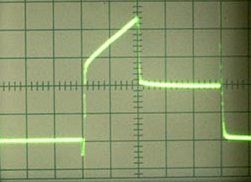 A digital oscilloscope, of course, is much more advanced than an ordinary electronic one, it allows you to remember waveforms, can connect to a personal computer, has mathematical processing of results, screen markers and much more. But with all the advantages, these new generation devices have one significant drawback - this is a high price.
A digital oscilloscope, of course, is much more advanced than an ordinary electronic one, it allows you to remember waveforms, can connect to a personal computer, has mathematical processing of results, screen markers and much more. But with all the advantages, these new generation devices have one significant drawback - this is a high price.
It is she who makes the digital oscilloscope inaccessible for amateur purposes, although there are “pocket” oscilloscopes worth only a few thousand rubles, which are sold on Aliexpress, but it is not particularly convenient to use them. Well, just an interesting toy. Therefore, while we will talk about measurements using an electronic oscilloscope.
On the topic of choosing an oscilloscope for use in a home laboratory on the Internet, you can find a sufficient number of forums. Without denying the virtues of digital oscilloscopes ...
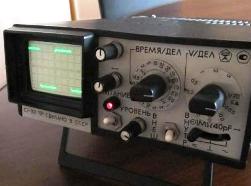 In the article “Electronic Oscilloscope - Device, Principle of Operation”, this universal instrument was briefly described. The information given is sufficient to make the measurement process conscious, but in the case of repair of such a complex device, deeper knowledge will be needed, because the circuitry of electronic oscilloscopes is very diverse and quite complicated.
In the article “Electronic Oscilloscope - Device, Principle of Operation”, this universal instrument was briefly described. The information given is sufficient to make the measurement process conscious, but in the case of repair of such a complex device, deeper knowledge will be needed, because the circuitry of electronic oscilloscopes is very diverse and quite complicated.
Most often, a beginner radio amateur has at his disposal a single-beam oscilloscope, but having mastered the methods of using such an instrument, it will not be difficult to switch to a two-beam or digital oscilloscope.
The figure shows a fairly simple and reliable C1-101 oscilloscope with so few handles that it is absolutely impossible to get confused. Please note that this is not some kind of oscilloscope for school physics lessons, it was just that that was used in production only twenty years ago. Oscilloscope power not only 220V ...
Electronic oscilloscope - device, principle of operation
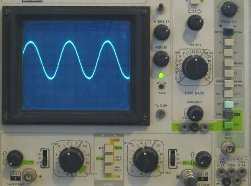 Amateur radio, as a hobby, is a very exciting activity, and, one can say, addictive. Many come into it in the wonderful school years, and over time, this hobby can become a profession for life. Even if you can’t get a higher radio engineering education, independent study of electronics allows you to achieve very high results and success. At one time, Radio magazine called such specialists engineers without diplomas.
Amateur radio, as a hobby, is a very exciting activity, and, one can say, addictive. Many come into it in the wonderful school years, and over time, this hobby can become a profession for life. Even if you can’t get a higher radio engineering education, independent study of electronics allows you to achieve very high results and success. At one time, Radio magazine called such specialists engineers without diplomas.
The first experiments with electronics begin, as a rule, with the assembly of the simplest circuits, which begin to work immediately without adjustment and setup. Most often these are various generators, calls, unpretentious power supplies. All this can be collected by reading a minimal amount of literature, just descriptions of repeatable patterns. At this stage, as a rule, it is possible to do with a minimal set of tools: a soldering iron, side cutters, a knife and several screwdrivers. Gradually, the designs become more complex, and sooner or later it turns out ...
How to determine unknown transformer parameters
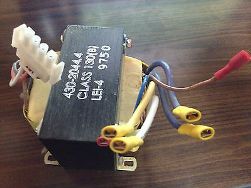 The first thing to do is to take a piece of paper, a pencil and a multimeter. Using all this, ring the transformer windings and draw a diagram on paper. The conclusions of the windings in the picture should be numbered. It is possible that the conclusions will be much smaller, in the simplest case there are only four: two terminals of the primary (network) winding and two terminals of the secondary. But this does not always happen, more often there are several more windings.
The first thing to do is to take a piece of paper, a pencil and a multimeter. Using all this, ring the transformer windings and draw a diagram on paper. The conclusions of the windings in the picture should be numbered. It is possible that the conclusions will be much smaller, in the simplest case there are only four: two terminals of the primary (network) winding and two terminals of the secondary. But this does not always happen, more often there are several more windings.
Some conclusions, although they exist, may not “ring” with anything. Are these windings torn off? Not at all, most likely these are shielding windings located between other windings. These ends are usually connected to a common wire - the "ground" of the circuit.
Therefore, it is desirable to record the winding resistances on the obtained circuit, since the main goal of the study is to determine the network winding. Her resistance is usually greater ...
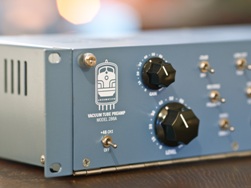 One of the most popular amateur radio designs is UMZCH audio frequency power amplifiers. For high-quality listening to music programs at home, most often they use fairly powerful, 25 ... 50W / channel, usually stereo amplifiers.
One of the most popular amateur radio designs is UMZCH audio frequency power amplifiers. For high-quality listening to music programs at home, most often they use fairly powerful, 25 ... 50W / channel, usually stereo amplifiers.
Such a large power is not needed at all in order to get a very high volume: an amplifier working at half the power allows for a cleaner sound, distortions in this mode, and even the best UMZCH has them, they are almost invisible.
It is rather difficult to assemble and set up a good powerful UMZCH, but this statement is true if the amplifier is assembled from discrete parts - transistors, resistors, capacitors, diodes, maybe even operational amplifiers. Such a design is possible for a sufficiently qualified radio amateur, who has already assembled not one or two amplifiers ...
How to measure voltage, current, resistance with a multimeter, check diodes and transistors
 The DT83X multimeter has only two limits for measuring alternating voltages 750 and 200, of course, this is in volts, although only numbers are written on the devices. Thus, if there is a need to measure the voltage in the outlet, then you need to choose the limit of 750, in other cases 200. Here you should pay attention to such subtlety: the alternating voltage should be sinusoidal in frequency 50 ... 60 Hz, only in this case the measurement accuracy will be acceptable.
The DT83X multimeter has only two limits for measuring alternating voltages 750 and 200, of course, this is in volts, although only numbers are written on the devices. Thus, if there is a need to measure the voltage in the outlet, then you need to choose the limit of 750, in other cases 200. Here you should pay attention to such subtlety: the alternating voltage should be sinusoidal in frequency 50 ... 60 Hz, only in this case the measurement accuracy will be acceptable.
If the measured voltage has a rectangular or triangular shape, and its frequency is much higher than 50 Hz, at least 1000 ... 10000 Hz, then the readings on the display, of course, will appear, but what they symbolize is unknown. Here we can only say with confidence that there is alternating voltage, the circuit seems to be working. But, let's take a break from the measurement process and take a close look at the front panel of the multimeter ...
How to use a multimeter, DC voltage measurement
 The word multimeter consists of two words: multi - a lot and meter - measurements, measuring device. These definitions can be found in the multitran English-Russian dictionary, and therefore, with full confidence we can say that a multimeter is a multitude of measuring instruments “packed” in one small box. All of these measuring instruments are designed for measurements in electrical circuits, and it would be unforgivable to start a story about electrical measurements without remembering Ohm's law.
The word multimeter consists of two words: multi - a lot and meter - measurements, measuring device. These definitions can be found in the multitran English-Russian dictionary, and therefore, with full confidence we can say that a multimeter is a multitude of measuring instruments “packed” in one small box. All of these measuring instruments are designed for measurements in electrical circuits, and it would be unforgivable to start a story about electrical measurements without remembering Ohm's law.
In school textbooks, Ohm's law for a section of a circuit is written as follows: "The current in the circuit (I) is directly proportional to the voltage (U), and inversely proportional to the resistance (R)." All who are seriously engaged in electricity know this phrase as our Father. And then say, not knowing Ohm’s law - sit at home. If Ohm's law is written in the form of a mathematical formula, it will turn out quite simply: I = U / R. This is Ohm's law for the chain section ...
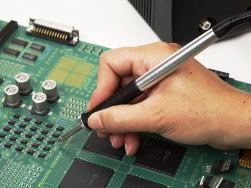 Induction soldering stations are contact type stations. The principle of operation of an induction soldering iron was described in the article "Electric soldering irons: types and designs." In short, the principle of operation of an induction soldering iron is as follows.
Induction soldering stations are contact type stations. The principle of operation of an induction soldering iron was described in the article "Electric soldering irons: types and designs." In short, the principle of operation of an induction soldering iron is as follows.
The soldering rod has a ferromagnetic coating, an induction coil is wound around the rod. High-frequency rectangular oscillations (470 KHz) are fed into the coil, which create eddy currents, Foucault currents in the ferromagnetic coating. Due to losses in the ferromagnet, it is heated, which continues until the temperature reaches the Curie point, at which the magnetic properties of the ferromagnet disappear, and heating ceases.The method itself is called Smart Heat, which can be translated as “smart heat”. The inventor of this method is american company...
